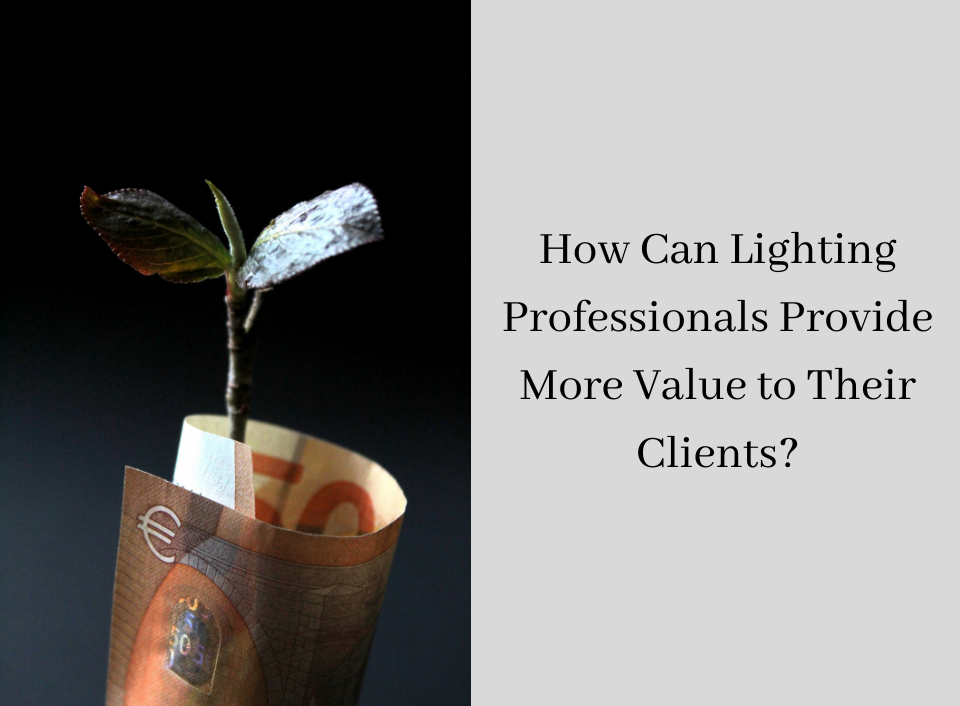Professionals in the European lighting industry will likely be well aware of the problems they have been facing recently, with construction projects being revised, postponed, or worse, cancelled completely!
Since many countries have affected lockdowns since March, several businesses in the lighting industry will feel like the rug has been pulled from under them, and it has. The professional environment has been completely transformed, and in order to survive these challenging times, the lighting industry must adapt.
These last 20 years have been a radical time for anyone involved in the European lighting industry – the transformation to Solid State Lighting (SSL) saw a complete overhaul of how artificial light is transmitted – so lighting professionals have already proven themselves to be very adaptable, and will be capable of surviving these most trying of times.
With these circumstances in mind, what can lighting professionals do to provide more value to their clients?
In these trying times, it must be reasserted that employing a lighting designer can actually add value to a construction project. Engineering consultants may be sitting in their offices (or at home), considering which design services are expendable. If lighting designers work as diligently as their profession requires, embracing the latest techniques and technology, then it will actually lead to extra savings related to the lighting installation, without compromising on quality, and enhancing business profits.
Lighting design is no longer a case of simple illumination (if it ever was). While approaches and priorities may vary depending on the project, there are some key factors to be considered which are universal.
The first is energy efficiency. While this concept will be nothing new to anyone working in the industry, they may not be aware that the energy efficiency of SSL’s is actually always improving. This is because they follow an efficiency curve in a similar way to Moores law for computer processing power. It’s known as Haitz’ Law (named after Roland Haitz). It states that the cost of each lumen produced will fall by a factor of 10, and the lumen output of SSL’s will increase by a factor of 20 over the same period. Put simply, if 100 lumens per watt was possible in 2010, then 200 lm/W will be achieved by this year, 2020.
Prototypes have existed of luminaires which can actually produce 220 lm/W since 2018, when LG unveiled a commercially available product.
Lighting designers will know that depending on the project, there is always a compromise to be made between efficiency and aesthetic, however if they are faced with declining budgets, decisions will be weighted towards the former.
These last 20 years have been a radical time for anyone.
Lighting controls are another great way to save money within a lighting installation, both as a way to automate lighting to be on only when required, and as a way to reduce the need for additional wiring using wireless technologies such as Wi-Fi or more recently Bluetooth.
This can include presence/absence detection, daylight harvesting and wireless switching. Installing the right software platform will allow luminaires to be programmed to provide the exact amount of light required on the reference plane, at any time of the day, allowing for high quality designs. The same software may also be able to monitor the performance of the luminaire and control gear, allowing for predictive maintenance.
Lifetime ratings have increasingly become a differentiator for high quality lighting products. For a long time since the advent of SSL lifetime ratings of 50,000 hours were so impressive that no-one seemed to require more. If you consider that fluorescent and metal halide light sources lasted up to 15,000 hours, it’s easy to take that 300% plus improvement and hang your hat on it. However, it has been more than a decade since SSL’s have been in commercial usage, and just as there has been improvements in light output efficiency, companies like Lumenpulse are producing lighting ranges which quote lifetime ratings of 225,000 hours.
It is also important for specifiers to be aware that lifetime ratings can mean little if they’re not covered by a warranty from the manufacturer. This is a big chunk of value which can be provided to customers, because the best luminaire specifications don’t mean a lot if the manufacturer isn’t willing to stand behind their products for a considerable amount of time. Quality manufacturers usually provide a five year warranty, comprised of one year on site, and after that equipment must be returned for the remaining four years. Buyers shouldn’t settle for anything less than this, and they should make sure that all warranty documents are filled out and returned during the purchasing process.
All of the aforementioned technical aspects of a lighting design are important and should be considered to their fullest as part of any project. As budgets get cut and projects become more demanding, it’s important that designers don’t lose sight of two crucial aspects of their profession – Lighting spaces well, and pleasing their clients.
They shouldn’t forego lighting vertical surfaces, as a way to save some money on the projects, because the lighting guide they are following only requires them to light horizontal surfaces. Besides the practical application of lighting, it is important that end users are able to enjoy the places they inhabit, whether it’s for work, retail or relaxation.
For retail specifically, if you ask the owners or managers of the shop that you are lighting, their primary concern isn’t to save money by reducing their spend on lighting, but to enhance their product so that they can sell more to cover the cost of it.
This article originally appeared in the October 2020 issue of designing lighting.



